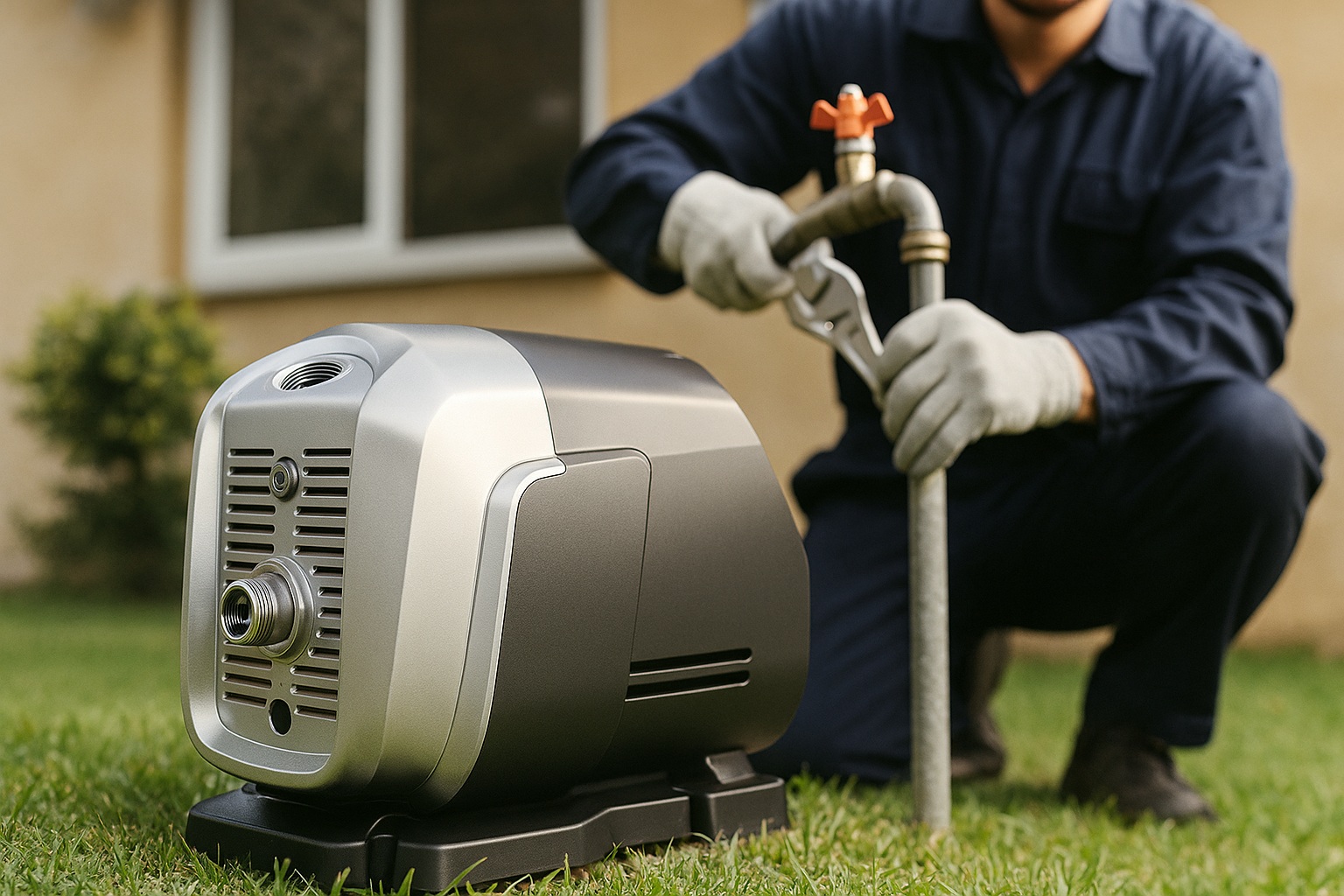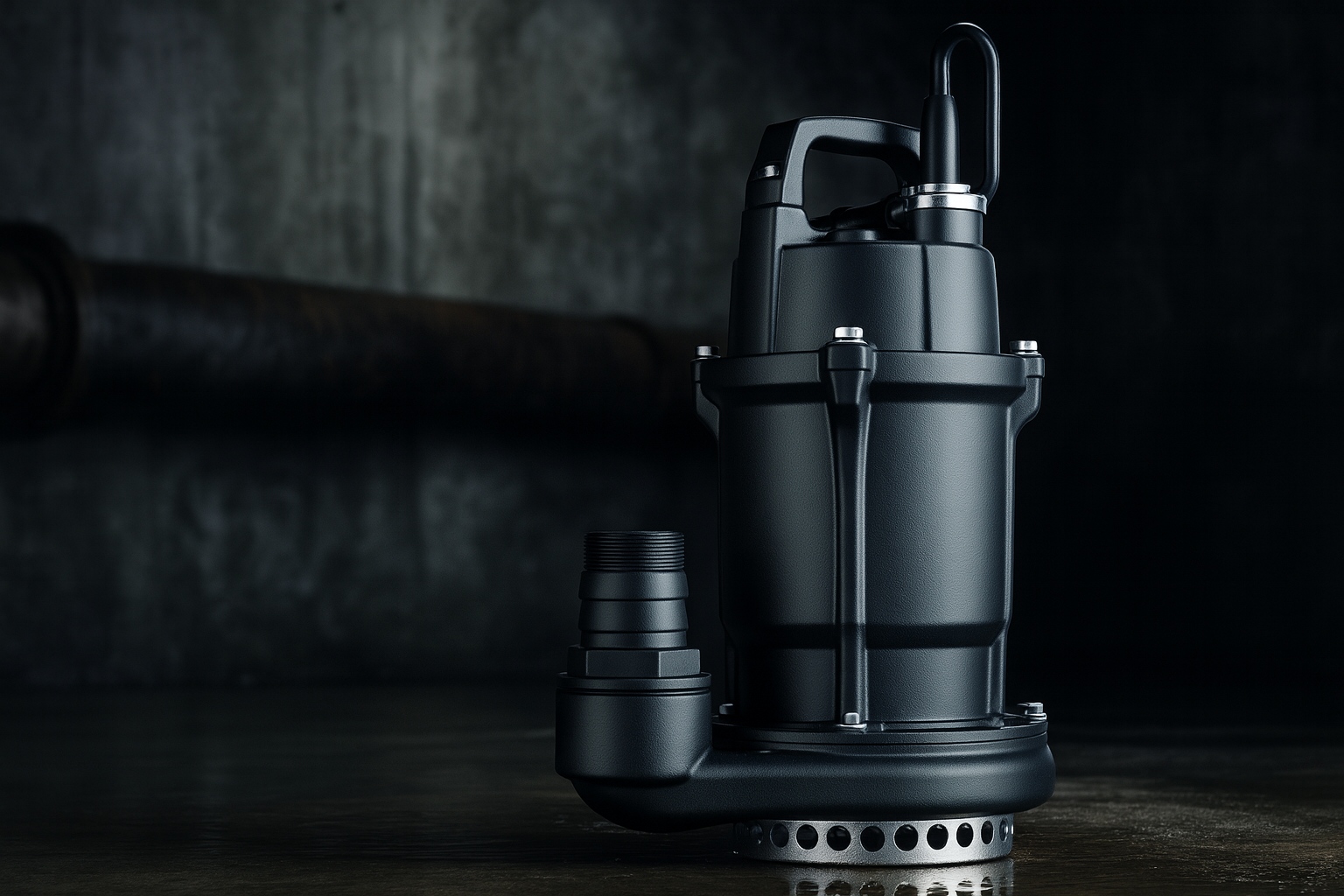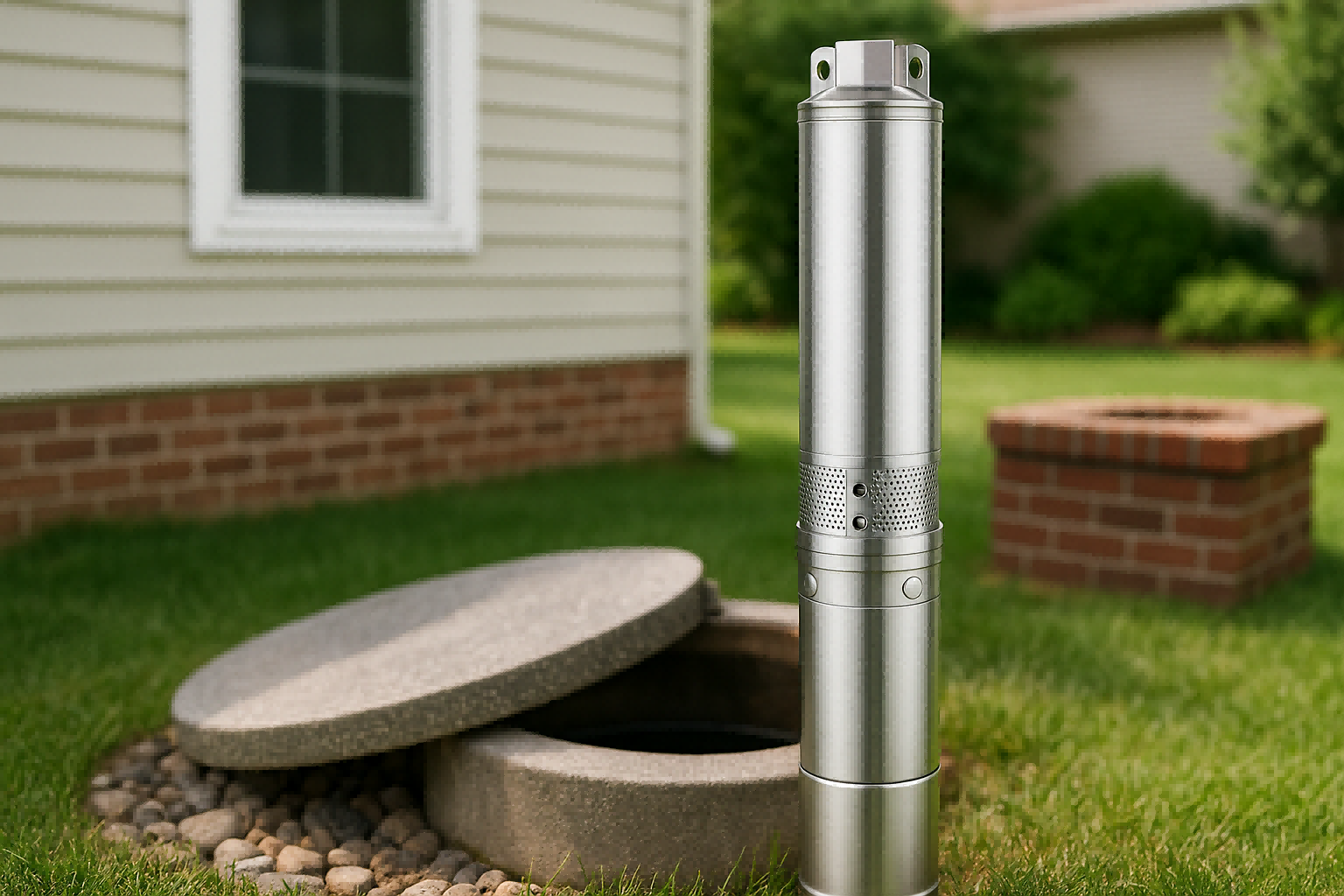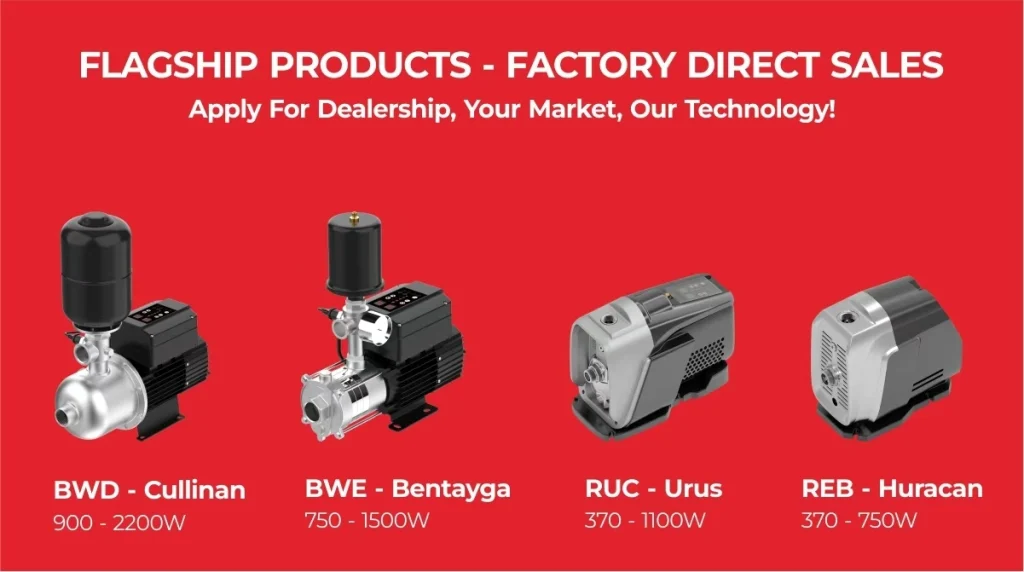Frustrated with weak showers and slow-filling toilets?
Low water pressure can be a daily annoyance.
A booster pump is the solution you need.
A booster pump is a device used to increase water pressure in your plumbing system. It ensures a strong, consistent flow for showers, faucets, irrigation, and appliances. It overcomes issues of low natural pressure from the main supply.

But how do these devices work, and what makes one different from another?
Let's explore the key differences, applications, and technologies that power modern water pressure solutions.
Understanding these details will help you choose the perfect pump for your needs.
The Main Differences Between Basic Pumps and Booster Systems
Are you choosing a pump for your property?
It's easy to confuse different types of pumps.
Understanding their key differences is crucial for making the right choice.
A intelligent booster pump system typically has a pressure tank and operates automatically, turning on and off with demand. A basic garden pump usually runs continuously when switched on. This makes smart boosters ideal for whole-home plumbing and automated irrigation.
Key Distinguishing Features
The design differences between a basic pump and a modern booster system are significant.
These differences directly impact their performance, efficiency, and ideal use cases.
A key feature of many booster systems is an attached pressure tank.
This tank holds a small reserve of pressurized water.
When you open a tap for a small amount of water, the system uses the water from the tank first.
This prevents the pump from needing to switch on for minor uses, saving energy and reducing wear.
The tank also absorbs sudden pressure changes, a phenomenon known as water hammer.
This protects your pipes from the "blows" caused by quickly opening or closing a faucet.
Automatic Operation
Another major difference is automation.
Intelligent booster pumps are designed to "think" for themselves.
They automatically switch on when they detect a drop in pressure, like when a shower is turned on.
They switch off a few seconds after the demand for water stops.
This "on-demand" functionality makes them perfect for supplying water to toilets, washing machines, and entire household water systems.
In contrast, most standard garden pumps require you to manually switch them on and off.
Self-Priming Capability
Both pump types are often self-priming.
This means they can draw water from a source, like a well or a tank, and then push it out at high pressure.
However, there are physical limits.
No pump can lift water from a depth greater than about eight meters due to atmospheric pressure.
It can, however, draw water from a longer horizontal distance if the vertical lift is within this limit.
This makes them versatile for drawing water from various sources on a property.
When to Use a Booster Pump?
Do you need powerful, consistent water pressure for your home or garden?
A standard water supply might not be enough.
A booster pump is the perfect tool for these situations.
A booster pump is ideal for increasing pressure for showers and faucets throughout a house. It's also perfect for automated garden irrigation with sprinklers. If you use harvested rainwater for toilets or washing machines, a booster pump provides the necessary automatic supply.
For Household Water Pressure
Low water pressure is a common problem in many homes.
It can be due to being far from the municipal supply line, living on an upper floor, or having old plumbing.
A booster pump solves this directly.
Installed on your main water line, it increases the pressure for your entire house.
This means stronger showers, faster-filling bathtubs, and appliances like washing machines working correctly.
For homes using rainwater harvesting systems, a booster pump is essential.
It takes the water stored in your tanks and delivers it with enough pressure to run toilets, laundry, and other non-potable water fixtures automatically.
For Garden and Lawn Irrigation
If you want to efficiently water your garden, a booster pump is a great choice.
You can connect it to hand-held sprayers or sprinklers.
The pump's automatic function is a major benefit here.
When you use a hand-held sprayer, the pump will turn on when you squeeze the handle and turn off when you release it.
This level of control is not just convenient; it also conserves water and energy.
For larger areas, you can connect multiple sprinklers or an irrigation system.
The booster pump will provide the high, steady pressure needed to ensure all sprinklers operate effectively and cover the intended area.
For Commercial and Industrial Applications
Beyond the home and garden, booster pumps are vital in many other settings.
- Commercial Buildings: Multi-story offices and hotels rely on booster pump systems to deliver uniform water pressure to every floor, from the basement to the top level.
- Industrial Processes: Many manufacturing operations require precise and reliable water pressure. Booster pumps ensure these processes run smoothly.
- Fire Protection: Fire suppression and sprinkler systems must have adequate water pressure to be effective. Booster pumps maintain this pressure for enhanced safety.
How Do Modern Booster Pumps Work?
Have you ever wondered what happens inside a booster pump to create that strong flow?
The process is a smart blend of mechanics and physics.
It's simpler than you might think.
A booster pump works by using a spinning impeller to grab incoming water and throw it outward with great force. This action increases the water's speed and pressure. The pressurized water then exits the pump, ready to flow through your pipes.
The Core Mechanical Process
The heart of every booster pump is a component called an impeller.
An impeller is a rotating disc with curved vanes or blades.
Here is a simple breakdown of how it works:
- Water Inlet: Water from your main supply or a tank enters the pump through an inlet connection.
- Impeller Action: An electric motor spins the impeller at high speed. As the impeller rotates, its vanes catch the incoming water and sling it towards the outside of the pump casing. This converts the motor's rotational energy into kinetic energy (speed) in the water.
- Pressure Increase: As the water is forced into the narrowing area of the pump casing (the volute), its speed is converted into pressure. This mechanical action is what "boosts" the pressure far beyond what the source could provide.
- Water Outlet: The newly pressurized water then exits the pump through an outlet, ready to be distributed to your showers, faucets, or irrigation system.
The Role of Smart Technology
Modern booster pumps are more than just a motor and an impeller.
They integrate advanced electronics for superior performance and efficiency.
Variable Frequency Drive (VFD)
Many high-end pumps use a Variable Frequency Drive, also known as a VSD (Variable Speed Drive).
Instead of running at one constant, high speed, a VFD adjusts the motor's speed in real time.
A pressure sensor monitors the pressure in your pipes.
If you open one faucet, the VFD runs the motor at a low speed, just enough to maintain the desired pressure.
If you open more faucets or start a shower, the VFD speeds up the motor to meet the increased demand.
This "smart" control ensures you always have constant pressure, no matter how many outlets are in use.
It also dramatically reduces electricity consumption, as the pump only ever uses the exact amount of energy needed.
Soft Start & Soft Stop
Another benefit of VFD technology is the "soft start" and "soft stop" function.
A traditional pump starts with a sudden jolt, which puts mechanical stress on the components and causes a pressure surge (water hammer) in your pipes.
A VFD-controlled pump ramps up its speed gradually when it turns on and slows down smoothly when it turns off.
This gentle operation significantly reduces wear on the motor and bearings.
It also protects your plumbing from the damaging effects of hydraulic shock, extending the life of both the pump and your pipes.
How to Choose the Right Booster Pump
Feeling overwhelmed by all the pump options available?
Choosing the right booster pump is critical for performance.
Making the wrong choice can lead to poor pressure or wasted energy.
To choose the right pump, first, determine your required flow rate and pressure boost. Then, consider the application (home, commercial), available space, and energy efficiency. Looking at advanced control features and durability will ensure a long-lasting, effective solution.
Understand Your System's Needs
Before you start shopping, you need to know what you need the pump to do.
This involves understanding two key factors:
- Flow Rate: This is the volume of water you need, usually measured in liters per minute (LPM) or gallons per minute (GPM). Add up the flow rates of all the fixtures you might use at the same time (e.g., a shower, a kitchen sink, and a toilet). This gives you your peak demand.
- Pressure Boost: This is how much you need to increase your existing pressure, measured in bar or PSI. Subtract your current water pressure from your desired water pressure. For most homes, a target pressure of 3 bar (about 45 PSI) is ideal.
Knowing these numbers will help you narrow down pumps that are powerful enough for your needs without being oversized and wasteful.
Evaluate Pump Features and Technology
Once you know your performance requirements, you can compare the features of different models.
Modern pumps come with technologies that greatly enhance performance, durability, and safety.
Core Drive Technology
The motor and drive are the engine of the pump.
Permanent Magnet Synchronous Motors (PMSM) paired with a Variable Frequency Drive (VFD) are the gold standard for efficiency and quiet operation.
This combination provides a constant, stable pressure supply while consuming significantly less energy than traditional motors.
Look for pumps with a wide voltage range (e.g., 165–260V) to ensure stable performance even with an unreliable power grid.
Durability and Materials
A pump is a long-term investment, so durability is key.
Check the materials used for critical components.
| Component | Premium Material | Benefit |
|---|---|---|
| Impeller | AISI 304 Stainless Steel | Excellent corrosion resistance, strong |
| Pump Housing | UV-Resistant ABS/Metal | Protection from sun damage, durable |
| Sealed Electronics | Potted PCB (IP67 Rated) | Waterproof, dustproof, extended lifespan |
| Bearings | High-Precision Brands | Quieter operation, longer pump life |
An electronically sealed or "potted" main control board is a major advantage.
This feature seals the sensitive electronics in a waterproof compound, protecting them completely from moisture and dust.
This can extend the life of the controller by several years.
Smart Protection Systems
Failures can happen, but the best pumps are designed to protect themselves.
Look for a comprehensive suite of built-in safety protections.
A good system will monitor for a wide range of potential problems and shut the pump down or enter a recovery mode before damage occurs.
Key Protections to Look For:
- Dry Run Protection: Prevents the pump from burning out if the water source runs dry.
- Overheating Protection: Monitors motor and electronics temperature.
- Voltage Protection: Guards against damage from power surges or low voltage.
- Frost Protection: Automatically runs the pump for short periods in freezing weather to prevent ice damage.
- Leak Detection: Alerts you to small, continuous flows that might indicate a leak in your plumbing.
These smart features provide peace of mind and safeguard your investment.
By carefully considering your needs and evaluating the technology and quality of the pumps available, you can select a booster system that will provide reliable, efficient performance for years to come.
Conclusion
A booster pump is an essential device for fixing low water pressure.
By choosing a modern, intelligent model, you ensure strong flow, save energy, and protect your plumbing system effectively.
FAQs
What size booster pump do I need for my house?
The size depends on your flow rate needs and the number of bathrooms.
A typical 3-4 bedroom house often requires a pump that can deliver 30-40 liters per minute.
Can a booster pump be too powerful?
Yes, an oversized pump can waste energy and cause excessive pressure.
This may strain your pipes and fixtures, so it's important to match the pump to your system's requirements.
Where is the best place to install a booster pump?
Install the pump on the main water line after the water meter.
This ensures that the water pressure is boosted for the entire house.
Choose a dry, ventilated, and accessible location.
How much pressure should a booster pump add?
Most residential systems operate well at around 3 bar (45 PSI).
Your pump should be able to increase your incoming pressure to reach this target comfortably.
Are booster pumps noisy?
Older models can be noisy.
However, modern pumps with VFD technology and high-quality motors can operate at noise levels below 50dB, which is quieter than a typical conversation.
Can a booster pump pull water from a well?
Yes, if it is a self-priming model.
However, it cannot lift water from a vertical depth greater than about 8 meters (26 feet) due to the laws of physics.
Does a booster pump use a lot of electricity?
Pumps with Variable Frequency Drive (VFD) technology are highly efficient.
They adjust their speed to the demand, using significantly less electricity than older, fixed-speed pumps.
How long does a booster pump last?
A high-quality booster pump can last for 8 to 15 years.
Longevity depends on the quality of its components, usage patterns, and whether it has protective features.








